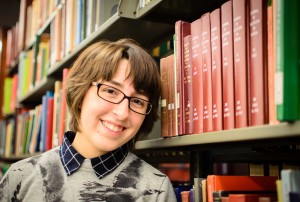
Many parents worry that their students’ futures will be bleak if they do not attend college. Higher education today is the pathway to becoming “something” someday. Unfortunately, in American universities, not everyone is given the same access to opportunities of higher education.
There continues to be a gap between students from low-income backgrounds and students from high-income backgrounds in attaining higher education. In a family of four, low-income is defined as having a family income of $35,775. According to the National Center for Educational Statistics, in 2011, the immediate college enrollment rate for high school graduates from low-income families was 52 percent, 30 percentage points lower than the rate for graduates from high-income families.
There are many bright students from these backgrounds who have the capability to succeed, but are not given the opportunity. Only recently has there been a more conscious effort in acknowledging students from low socioeconomic backgrounds.
In January, the Obama administration announced new commitments to help low-income students attend college. More than 100 colleges pledged to increase the access to opportunity. Even more recently, the newly redesigned SAT, that will be coming out in 2016, is trying to provide a test that will more accurately relate to students’ learning and prepare them for college. The new SAT will be more accessible to low-income students by providing four free college waivers.
High-achieveing low-income students often turn down their dream schools simply because they cannot afford the expensive price of higher education. In conversations with a selection of BU undergraduate students, though all students had diverse backgrounds and unique goals, they all had one thing in common: they chose BU because BU was the school that gave them the most financial aid, whether it was through scholarships, grants, federal loans, or a combination of all three. “Although many students like to joke, complain, or both at the same time about how BU is very, to be frank, greedy when it comes to money, at the same time BU balances it out by being one of the best schools in terms of financial aid offered,” said Christian Morales (ENG ’16). The students interviewed were not all given full rides to BU, rather they were able to see how the academics and resources at BU would offset the remaining difference of what they would have to pay for the academic year. Nowadays, college is not so much about current affordability, but about the investment.
For others, it feels as though BU is only a huge enterprise. “Personally, it just feels that BU accepts us just to accept us, that we’re merely a boost to their reputation because they ‘invest’ in students from poor backgrounds, ” said an engineering student who would rather be kept anonymous. However, it is difficult to provide every financially qualified student with the fully deserved amount of aid, as Boston University is a huge school with 33,000 undergraduate and graduate students. According to the 2013 BU Fiscal Report, $197 million goes to undergraduate financial aid.

BU, like most other universities and colleges, will give financial assistance to the students they want most on their campus. It sounds reasonable that students who work the hardest in high school will receive the most generous aid. Highly recognized universities and colleges ideally want a diverse group of students to encourage a strong community in which students not only learn from their studies, but also from those around them. BU will award the most financial aid to high-scoring low-income students, and the university’s financial aid website makes that clear:
Academic record is an important factor in determining your eligibility for Boston University scholarships. Key indicators such as high school grade point average (GPA), rank in class, and standardized test scores are considered, as well as the strength of your academic program and your extracurricular activities.
While it is true that high-achieving students should be rewarded with scholarships and grants, it is also difficult to find the brightest applicants by numbers. It is easy to forget that students, especially those from low socioeconomic backgrounds, do not necessarily come from an atmosphere that motivates them to do their best.
When students are situated in an environment that does not stimulate intellectuality, their perceptions become limited, and they come to accept the lack of opportunity. Families from low socioeconomic backgrounds may not have the time or financial resources to provide for their children. For instance, children from low socioeconomic backgrounds may not have the access to a wealth of books in their homes, which can have a strong factor in reading comprehension at an early age. Some of the brightest minds from low-income backgrounds are hindered because of a lack of information, mentorship, and other surmountable barriers.
It is also difficult to change low socioeconomic students’ ways of thinking when the lack of motivation is engrained in their culture. The University Service Center (USC) at BU helps first-generation students adjust into the community (there tends to be an overlap with low-income and first-generation college students):
USC exists to facilitate retention and ensure that students have a place to go with questions, concerns, and problems. The first generation programs are meant to celebrate the achievements of first gen students, and provide them with a “home base” of sorts as soon as they are admitted to BU. We can connect with each other and with the USC staff. We understand students may find other niches in our community as they spend time here, but we want to make sure they have one available immediately upon entry to BU. Our summer orientation welcome receptions provide that early welcome, allow students and their families to connect with us and with each other, and alert students to ongoing programming for the upcoming academic year. Our newsletters and events pages remind students of opportunities on campus and in Boston, and the Spotlight series reminds them they are not alone here at BU.

Boston University tries to accommodate students of low socioeconomic backgrounds, to an extent. Many low-income students at BU do receive generous aid, more than what other schools have offered them, but there are still many who are not given the best financial aid. As a result, BU continues to have a negative connotation of being a very expensive school. In a Bloomberg article, a study by New America Foundation revealed that “Boston University charges students whose families earn $30,000 or less an average “net price”—or costs after scholarships—of $23,932 and George Washington University, $14,670.” The article claims that colleges are rewarding merit scholarships to wealthy students while “shortchanging” poor students. The top-scoring, and often affluent, students raise revenue and prestige for BU as well as increase its college ranking in the U.S. News & World Report standings. There is just not enough financial aid to give to all the deserving low-income students, and they are the students who face the biggest obstacles.
Kailey Miller (CAS ’16), a student majoring in Bioanthropology and minoring in African Studies and Visual Arts grew up in rural Pennsylvania where many students, after graduating from high school, do not attend college. Instead, many become electricians, farmers, work with Keystone XL, or go into technical schools. Her high school had to accommodate for the students who would be more inclined to drop out of high school, which affected how challenging a class could be. Many students smoked pot and did drugs on school property, Kailey said. There was even a girl who had to wear an ankle chain so she could not attack anyone in class.
Research has suggested that a rigorous academic curriculum in high school helps prepare students for college-level work and is one of the best predictors of college success. For Kailey, she did not know what to expect when she took her first anthropology course at BU. Though it was difficult to adjust in the beginning, she worked hard in that course. Kailey was willing to take the risks because she knew she wanted a safer environment, and she wanted an education that would give her more opportunities beyond the culture she grew up in. While BU may not have be exactly accommodating toward all of its students, those who identify themselves as coming from low socioeconomic backgrounds are making it happen.

Many of these students find they adjust fairly well into the BU community that is diverse in socioeconomic backgrounds, intellectual interests, ethnicities, cultures, goals, and politics. “If you want to hang out with people from the same background as you, there’s 16,000 other students, so you’re bound to find someone similar to you somewhere. And if you want to hang out with people who come from completely different backgrounds, there’s still 16,000 others” said Christian. There are many different ways for a student to find his or her niche within the university setting. “By being in Boston in general, I’ve realized that everyone has common ground,” said Gaby Arguelles (ENG ’14).
Not only does a big university setting help low socioeconomic students fit in socially, but also feel intellectually challenged. “All of a sudden I found myself in a place where knowledge and learning are the highest priorities, and as a student, you’re being pushed to excell not only by your professors but by your peers as well,” said Christian. There are opportunities for students to increase their learning and personal growth, and to realize that there is something beyond the environment they came from.
Despite having many new opportunities, low-income students can still be at a disadvantage with the variety of fields to explore. Sometimes, coming from a low socioeconomic background influences what you study. Taylor originally came to BU wanting to major in English, but with her parents urgings, she changed her major to Human Physiology. “People who have more money have more options…[which] benefits their personal growth,” said Taylor (SAR’16). “I try not to [bring] everything back to money, but in the end, everything ties back to it.”
Low socioeconomic students will always be at a disadvantage until something is done about it. There is much discussion about these students getting the opportunities to attend their dream schools, as well as students who are not given the opportunities for higher education; however, who often gets unnoticed are the students who risk financial stability for higher education. Their determination, perseverance, and motivation reveal that they have taken the initiative to do something for themselves. These are the students who will take full advantage of their studies and surroundings. They will make an effort to go after opportunities and not wait for opportunities to come to them. Sometimes, for these students, hard work, drive, and a little bit of luck are the only ways to achieve their goals and dreams.



